I mentioned the phrase prisoners of geography to a group of fifth-grade students in social studies one day. At the time we were learning about the westward expansion of the United States, specifically, how impactful it was when The Louisiana Purchase opened up that massive area. When I used that phrase the term ‘prisoners’ and ‘geography’ threw them for a loop and immediately led to the things that fifth-grade students will say. I quickly told them that it wasn’t an incarceration, rather the term meant that people and countries are largely defined by the physical boundaries that surround them. Prisoners of Geography, Our World Explained in 12 Simple Maps is not your average world book. This is a very smart book that leads to questions, answers and an actual discussion about what’s happening in our world and why things have happened.
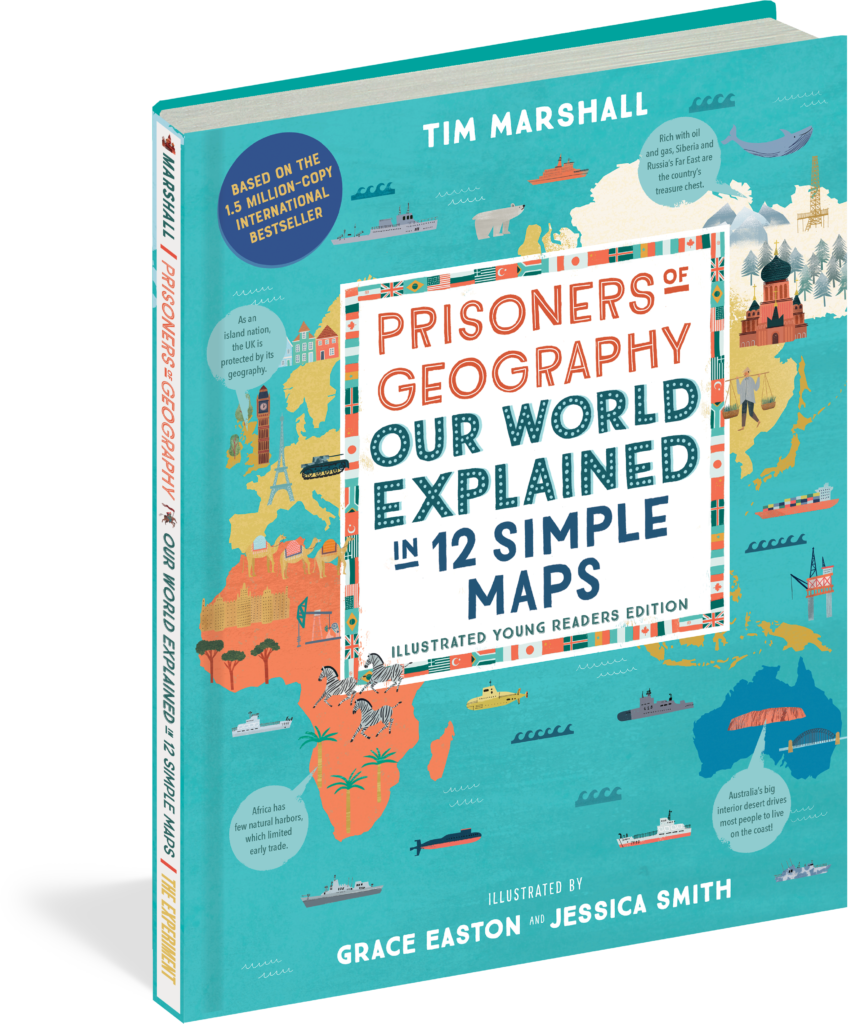
It’s not too smart though for a fourth grade class to talk about. In my future fifth-grade classes I tweaked how I presented the aforementioned phrase, which allowed students to fully realize the conundrum of Prisoners of Geography. This is a book that puts our world’s global scale on a plate that younger readers can understand. It accomplishes this through fabulous, age-appropriate graphics, a big format that invites them in, and the intelligence that they want to be treated with.
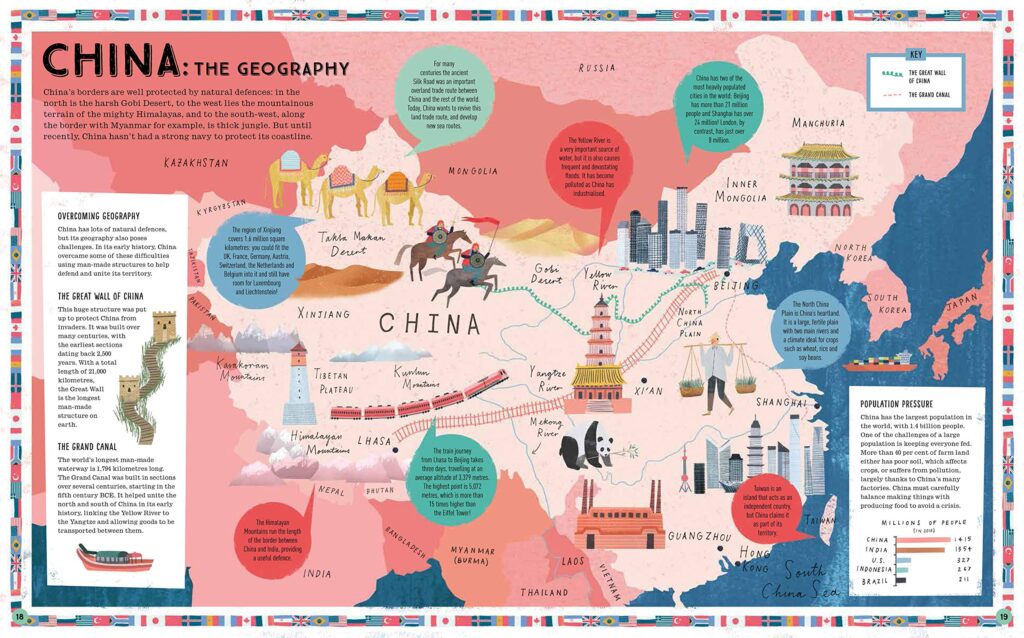
This is the second Prisoners of Geography book by author Tim Marshall. The first one was geared towards adult readers and was released in 2016. This version, Prisoners of Geography, Our World Explained in 12 Simple Maps, is larger and won’t be confused for a book that’s strictly for adults. However, like those other great illustrated books, both non-fiction and fiction, it can be appreciated and enjoyed by those old folks who pay mortgages or cell phone bills.
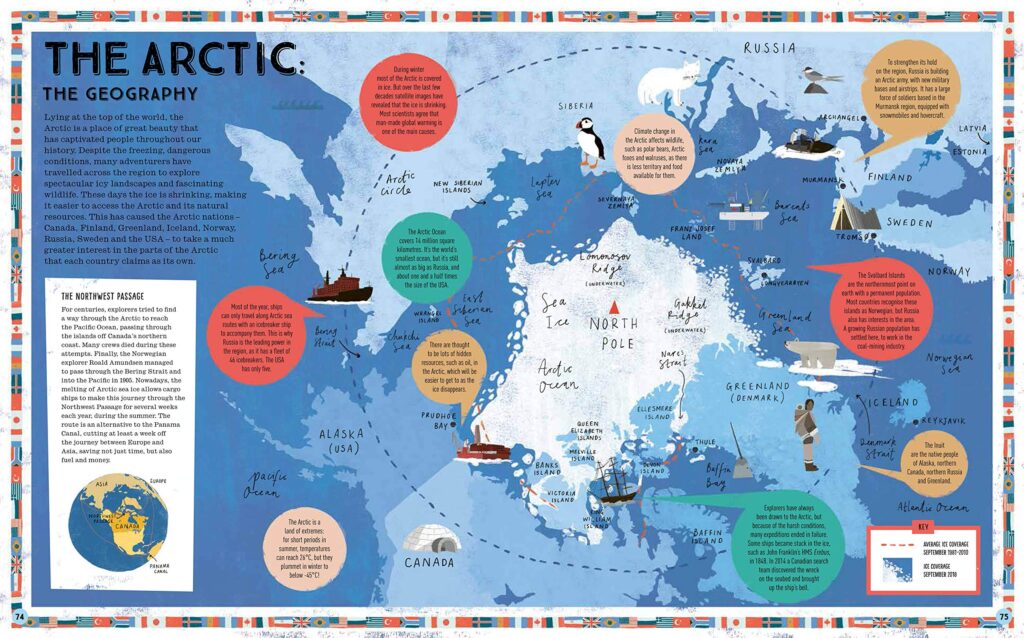
Those ages are not who the book is intended for. This books knows that students in fourth grade are smart and, regardless of what they say in class, want to be challenged. They don’t want to produce the same mamby pamby non-fiction essays on cats, dogs or the particular state that they live in. Prisoners of Geography presents the world via a series of 12 maps. The maps are detailed enough for an upper elementary school student to glean information about the country’s exports, natural resources, transportation infrastructure, space, and the natural boundaries that have defined it since its inception.
It also has a brief history of the country, the natural boundaries and how the two factors have impacted everything around it. This has the potential to be complicated stuff, but the book does a great job in going back in time and showing how the country is today. Prisoners of Geography does not gloss over the areas that are in dispute. If anything, it does the best age-appropriate job of describing why Tibet is so important to China, even though it’s an area that is claimed by two entities. Essentially, the snow from Tibet slows into the rivers of China, the Himalayan Mountains also provide a natural border to India. In recent years millions of Chinese Han have flooded the area, if and when their population exceeds the Tibetan people then their independence will be in even more peril.
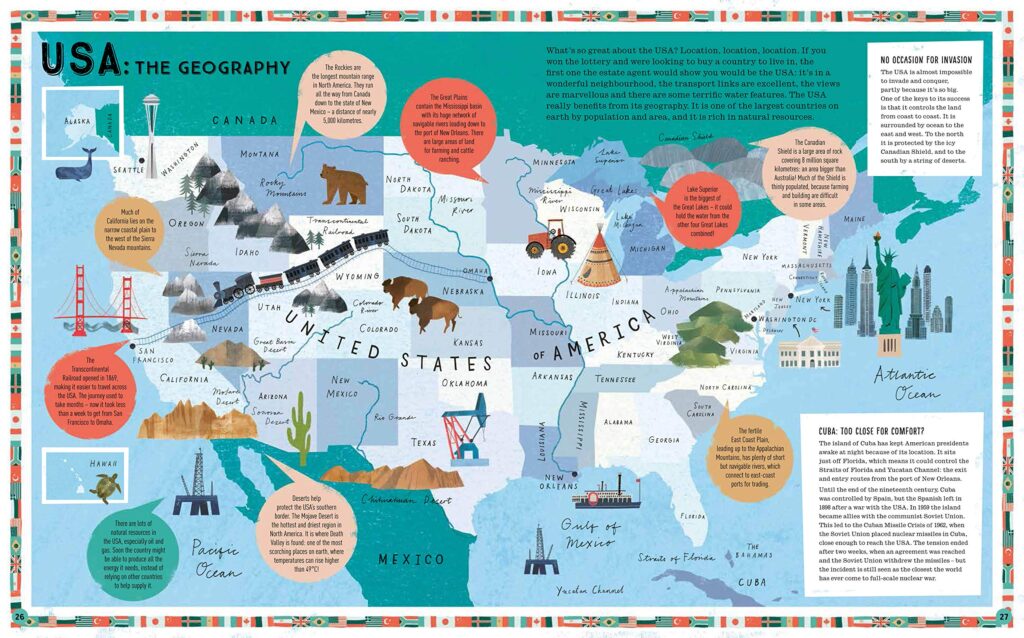
This book doesn’t play favorites and it doesn’t miss a trick. It’s entertaining, but gives the education in the book the driver’s seat. There are countless blurbs on every map that list dates of historic events, details on natural resources or exports that shaped the area’s economic destiny. Between the appeal of the illustrations and the bite-sized information nuggets it’ll be a contest as to which attracts the readers more. The construction of the book is also top-notch. The oversized pages are thicker than average and feel like a coffee-table book that a 10-year-old would have in the living room as they have company over that they’re trying to impress. The biggest difference between their pretend world and yours is that the books in their playground are ones that readers will enjoy reading, learn from and that their friends will want to read.
Prisoners of Geography, Our World Explained in 12 Simple Maps, Illustrated Young Readers Edition is by Tim Marshall with illustrations by Grace Easton and Jessica Smith and available on The Experiment Publishing.
There are affiliate links in this post.

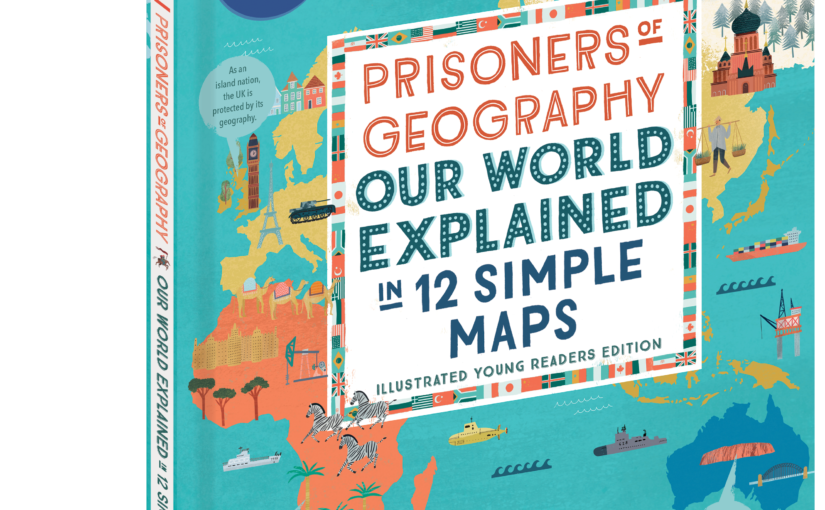



 Facebook
Facebook Twitter
Twitter Flickr
Flickr GooglePlus
GooglePlus Youtube
Youtube